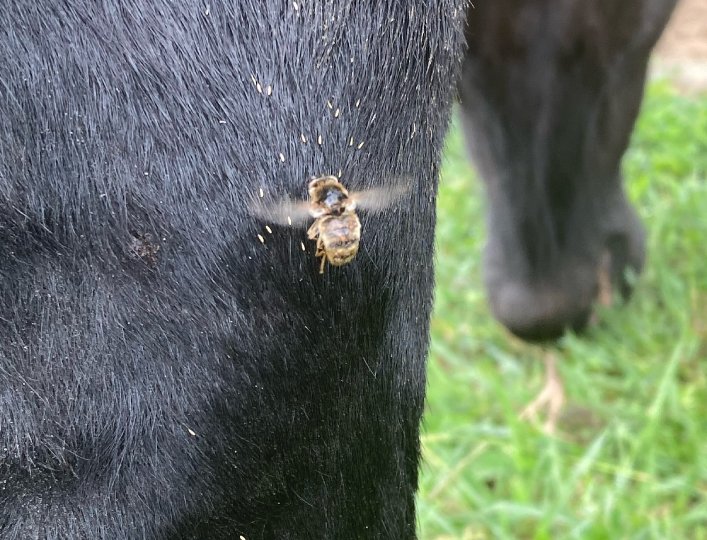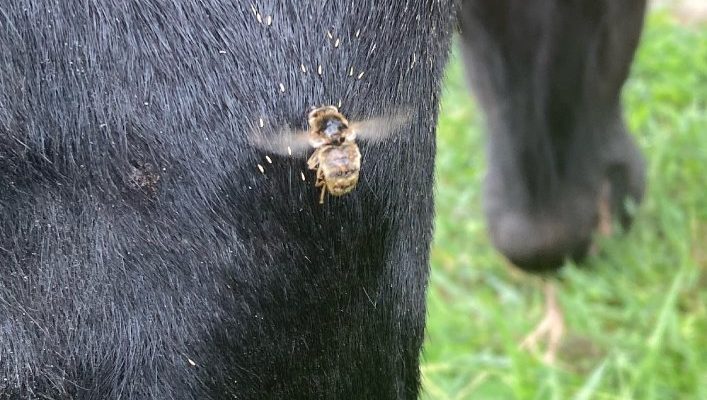
Botflies are a group of parasitic flies that lay their eggs in the skin of mammals, including humans. When the eggs hatch, the larvae burrow into the host’s skin, leading to some pretty uncomfortable situations. The connection between botflies and animal burrows is critical for their lifecycle, as these spots provide the perfect environment for the eggs to hatch and grow. You might be wondering why animal burrows are such a hotspot for these sneaky little insects. Well, let’s explore that further!
What Are Botflies?
Botflies belong to the family Oestridae, and there are several species that target different animals. Most commonly, we hear about the **human botfly** (*Dermatobia hominis*), which prefers to infect humans directly. These flies are larger than average and can be quite hairy, making them look a bit like bumblebees. Interestingly, botflies don’t just hover around; they depend on other insects to aid in the egg-laying process.
You might picture a botfly buzzing around aimlessly, but here’s the brilliant part: they’re incredibly strategic. Female botflies will often capture other insects, like mosquitoes, to transport their eggs. So, instead of landing directly on a mammal, they hitch a ride on another critter, ensuring their eggs are dropped exactly where they need to be.
How Botflies Locate Animal Burrows
You might think that finding an animal burrow is like searching for a needle in a haystack, but for botflies, it’s a natural instinct. These flies use a combination of smell, sight, and sound to locate potential hosts. When a burrow is nearby, the fly can detect the scents that indicate a warm, living body is inside. It’s almost as if they have a built-in GPS system!
Burrows are typically warm and offer protection, which makes them ideal for botflies. Animals like rabbits, rodents, and even some mammals create burrows as a safe space to live or hide from predators. Botflies are clever enough to recognize these locations as prime real estate for laying their eggs. By targeting these areas, they’re setting themselves up for a successful hatch.
The Egg Laying Process
Once a female botfly has found a suitable burrow, she goes into action. The actual process of laying eggs is quite fascinating. The female botfly will get close to the entrance of the burrow and release her eggs, often on a host animal as it enters or exits. Sometimes, she will lay her eggs directly on the ground near the opening, anticipating the presence of mammals.
Here’s the catch: botfly eggs are designed to hatch at the right moment. They’re often sensitive to temperature and humidity, so when they sense warmth, they hatch into larvae. This is usually when a host animal is nearby, which provides the perfect opportunity for the larvae to find their way inside.
How Larvae Interact with Their Hosts
Once the botfly eggs hatch, the larvae—often referred to as maggots—begin their journey into their new home. When they find their way onto the skin of an unsuspecting animal, they will burrow in. This can lead to some pretty serious health issues for the host, ranging from irritation to infection.
Interestingly, as the larvae grow, they create a small breathing hole in the host’s skin, allowing them to breathe while they develop. It might sound gross, but this unique adaptation ensures they can stay nourished while minimizing harm to their host. Here’s the thing: while the host suffers discomfort, the botfly larva is going through its own transformation, ready to emerge as a new adult fly.
Impact on Ecosystems and Animals
While the relationship between botflies and their hosts may seem one-sided, it’s important to recognize that these interactions play a role in the ecosystem. Botflies can be indicators of animal health and population dynamics. If their populations are booming, it might suggest that the prey species—like rodents—are also thriving.
However, too many botflies can stress their hosts, leading to disease or even death in more severe cases. For animals that are already compromised or weak, the presence of botfly larvae can be quite detrimental. It’s a delicate balance in nature; the botfly thrives while its host struggles.
Preventing Botfly Infestations
If you’re worried about botfly infestations, prevention is key. First and foremost, keeping your pets away from known wildlife areas can reduce their exposure to these flies. Regular veterinary check-ups can also help monitor any signs of botfly larvae, especially in high-risk animals.
For those in regions where botflies are more common, there are specific repellents designed to deter insects. Using these can create a barrier against the adult flies that are searching for hosts. It’s always a good idea to consult with a veterinarian for the best preventive measures tailored to your pet’s needs.
Botflies and their egg-laying habits near animal burrows might sound a bit gross, but they showcase the incredible intricacies of nature. From their strategic hunting of animal burrows to the surprising lifecycle of their larvae, there’s more to these little flies than meets the eye. Understanding this process can help us appreciate the roles that different species play in our ecosystems, even the ones that give us the creeps! Whether you’re a curious animal lover or just fascinated by the wonders of nature, the lifecycle of the botfly is a quirky reminder of how interconnected life can be.

